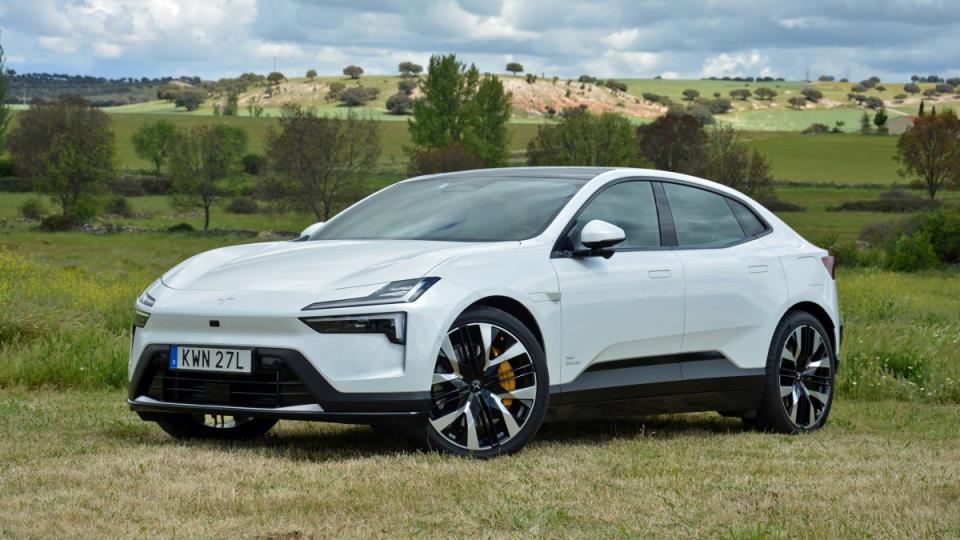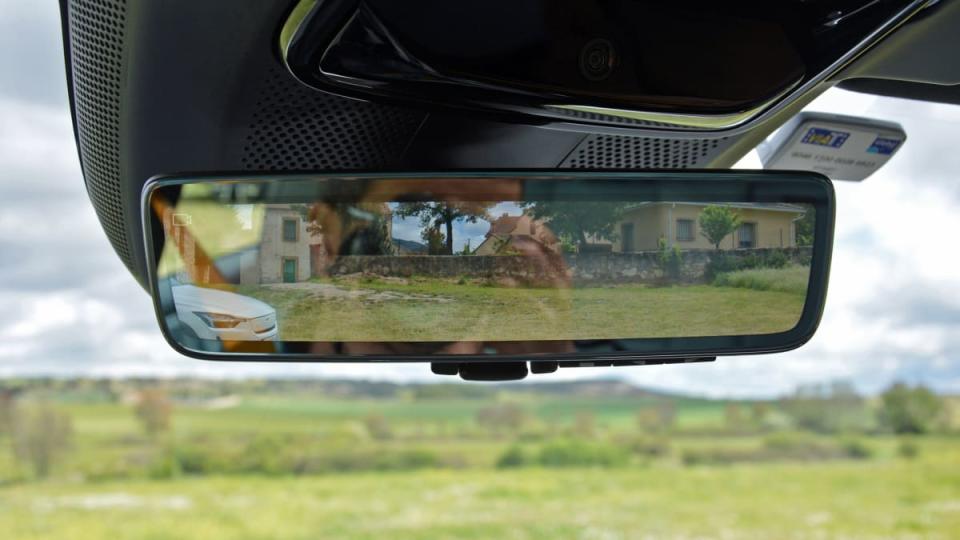2024 Polestar 4 First Drive Review: No looking back

MADRID, Spain — Historically, carmakers have used windows as a selling point when there are more of them than you might expect. Volkswagen’s 23-window Bus, which was officially known as the Deluxe Microbus with Samba Package, was an upmarket trim that’s highly sought-after today, for example. On the other side of the pond, the flagship Citroën XM was available with a 13th window that kept wind out of the cabin when the hatch was open. With the 4, Polestar argues the industry has reached peak window.
As far as eccentricities go, the lack of a rear window isn’t a minor one. We’re not talking about a van you’d see in a contractor’s fleet; this is a premium EV. There’s more to it than a glass-less hatch, however. After driving a pre-production car on a test track, I’m taking the 4 out on public roads.
First, a word about positioning. Don’t read too much into the “4” nameplate; Polestar names its cars in the order that they’re launched in. The 4 is, quite simply, the fourth Polestar model unveiled, and it’s positioned below the 3 in terms of pricing and size. The segment it competes in is relatively hard to pin down. It’s an SUV in the same sense that a taco is a sandwich: it ticks most of the right boxes on paper but it doesn’t really look the part. It’s more of a tall-ish sedan-hatchback mash-up. Or, maybe a crossover in the literal sense of the term rather than in the commonly accepted sense.
Regardless, the 4 certainly turns heads. There’s nothing else quite like it on the road. It falls in line with Polestar’s design language by adopting styling cues like T-shaped headlights, a grille-less front end and a thin rear light bar, but it’s not a photocopy of an existing model. It has its own identity.



Polestar claims that it has a very good reason for leaving out the rear window. “We wanted to have a coupe body style for aerodynamics and at the same time get a really spacious interior,” Maximilian Missoni, the brand’s head of design, told me. The window-less solution made it possible to shift the D-pillar back and gain a few inches. “Another problem with coupes is that [in the rear-view mirror] you see a lot of your own interior – you see the headrests and maybe your passengers,” he added.
The sheetmetal hides the modular SEA architecture shared with several other brands in the Geely empire. Versions of this basic platform underpin the Volvo EM90 minivan sold in China, the Volvo EX30 and the Lotus Eletre, among other models. Buyers will have two configurations to choose from at launch. The base model is called Long Range Single Motor, and it ships with — you guessed it — a single electric motor that zaps the rear wheels into motion. It’s rated at 272 horsepower and 253 pound-feet of torque, and it’s equipped with a 100-kilowatt-hour lithium-ion battery pack.
Next up is the Long Range Dual Motor, which gets two motors (one per axle) for through-the-road all-wheel-drive. The second motor increases horsepower and torque to 544 and 506, respectively. This trim uses the same battery as the rear-wheel-drive version. Both drivetrains are built around a 400-volt electrical system, and range checks in at up to 300 miles with rear-wheel drive or up to 270 miles with all-wheel drive. Charging from 10% to 80% takes about 30 minutes with a 200-kilowatt charger.
The 4 shares about 85% of its infotainment system with the 3, but the software is displayed on a portrait-oriented 14.5-inch touchscreen instead of on a landscape-oriented one. The system is Android-based, and Polestar designed the user interface in-house with clear, easy-to-read icons and a split-screen functionality. The driver can notably select the ratio of the split; you can display the navigation system on the left 3/4s of the screen and show the media and phone widgets on the right 1/4, for example. Vice versa works, too, as does a 50/50 split. This cool feature makes the system more intuitive and less distracting to use. “We are not developing phones. We are making cars, and we have distractions to worry about,” Ruben Rodriguez, the company’s head of UX design, told me.

 Yahoo Autos
Yahoo Autos 